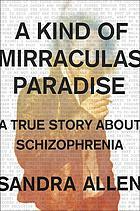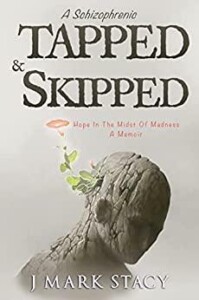How much do you know about schizophrenia? This severe mental illness affects an estimated 21 million people worldwide, including 2.8 million people in the United States. People with schizophrenia may experience hallucinations and delusions and they have trouble sorting and interpreting sensory information and responding appropriately. Those symptoms may sound scary, but schizophrenia is highly treatable with medication and therapy. And while people with schizophrenia are not any more dangerous than the general population, they may actually be more vulnerable to being the victim of crimes. Schizophrenia is most often diagnosed in late adolescence and young adulthood, and the top cause of premature death in people with schizophrenia is suicide. (Sources: Treatment Advocacy Center, National Institute for Mental Health, and the American Psychological Association)
If you want to know more about schizophrenia, including what it might feel like to live with schizophrenia, take a look at these books in our collection. The first step to understanding someone is learning their story. (Book summaries are pulled from our library’s catalog.)

The Collected Schizophrenias: Essays by Esme Weijun Wang. 2019. An intimate, moving book written with the immediacy and directness of one who still struggles with the effects of mental and chronic illness, The Collected Schizophrenias cuts right to the core. Schizophrenia is not a single unifying diagnosis, and Esmé Weijun Wang writes not just to her fellow members of the “collected schizophrenias” but to those who wish to understand it as well. Opening with the journey toward her diagnosis of schizoaffective disorder, Wang discusses the medical community’s own disagreement about labels and procedures for diagnosing those with mental illness, and then follows an arc that examines the manifestations of schizophrenia in her life. In essays that range from using fashion to present as high-functioning to the depths of a rare form of psychosis, and from the failures of the higher education system and the dangers of institutionalization to the complexity of compounding factors such as PTSD and Lyme disease, Wang’s analytical eye, honed as a former lab researcher at Stanford, allows her to balance research with personal narrative. An essay collection of undeniable power, The Collected Schizophrenias dispels misconceptions and provides insight into a condition long misunderstood.

The Edge of Every Day: Sketches of Schizophrenia by Marin Sardy. 2019. Against the starkly beautiful backdrop of Anchorage, Alaska, where the author grew up, Marin Sardy weaves a fearless account of the shapeless thief–the schizophrenia–that kept her mother immersed in a world of private delusion and later manifested in her brother, ultimately claiming his life. Composed of exquisite, self-contained chapters that take us through three generations of this adventurous, artistic, and often haunted family, The Edge of Every Day draws in topics from neuroscience and evolution to the mythology and art rock to shape its brilliant inquiry into how the mind works. In the process, Sardy casts new light on the treatment of the mentally ill in our society.

Henry’s Demons: Living with Schizophrenia, A Father and Son’s Story by Patrick Cockburn. 2011. On a cold February day two months after his twentieth birthday, Henry Cockburn waded into the Newhaven estuary outside Brighton, England, and nearly drowned. Voices, he said, had urged him to do it. Nearly halfway around the world in Afghanistan, journalist Patrick Cockburn learned from his wife, Jan, that his son had suffered a breakdown and had been admitted to a hospital. Ten days later, Henry was diagnosed with schizophrenia. Narrated by both Patrick and Henry, this is the extraordinary story of the eight years since Henry’s descent into schizophrenia–years he has spent almost entirely in hospitals–and his family’s struggle to help him recover.

A Kind of Mirraculas Paradise: A True Story About Schizophrenia by Sandra Allen. 2018. Sandra Allen did not know their uncle Bob very well. As a child, Sandy had been told Bob was “crazy,” that he had spent time in mental hospitals while growing up in Berkeley in the 60s and 70s. But Bob had lived a hermetic life in a remote part of California for longer than Sandy had been alive, and what little Sandy knew of him came from rare family reunions or odd, infrequent phone calls. Then in 2009 Bob mailed Sandy his autobiography. Typewritten in all caps, a stream of error-riddled sentences more than sixty, single-spaced pages, the often-incomprehensible manuscript proclaimed to be a “true story” about being “labeled a psychotic paranoid schizophrenic,” and arrived with a plea to help him get his story out to the world.

A Schizophrenic Tapped and Skipped by J. Mark Stacy. 2022. Faced with a severely schizophrenic daughter, homeless with no hope, and a heroin-addicted daughter clinging to life living in her car. A mother searches an infant boy’s eyes for the answers. How can God’s hand pull them through all this darkness? How will a mother find a different route? This is a journey through unmerciful mental madness and the torment of the people who desperately try to find help. Mentally ill are SKIPPED by society. Drug addiction is relentless. One day at a time, God’s glorious path becomes clear.
